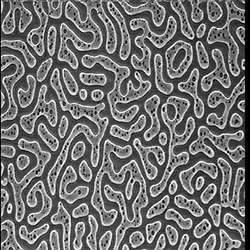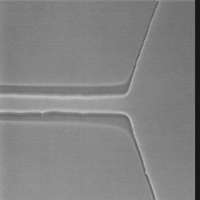Electric-Field-Induced Phase-Separation of Liquid Mixtures

Researches have shown that electric fields can control the phase separation behaviour of mixtures of simple liquids under practical conditions, provided that the fields are non-uniform. This direct control over phase separation behaviour depends on field intensity, with the electrode geometry determining the length-scale of the effect. This phenomenon will find a number of nanotechnological applications, particularly as it benefits from field gradients near small conducting objects.
Ludwik Leibler and colleagues at the City of Paris Industrial Physics and Chemistry Higher Educational Institution (ESPCI) have predicted theoretically and demonstrated experimentally that reversible phase separation can be induced in ordinary liquid mixtures under practical conditions provided non-uniform fields are used.
It is exciting and astonishing that such a simple but fundamental physics has not been explored so far. In some sense this is the simplest electro-optical effect that can exist: it does not require anything from the molecules other than having a modestly different dielectric constant. This is contrast to all other electro-optical effects (e.g. liquid crystals, birefringent molecules, etc.). The results are reported in the 29 July issue of Nature.
They predicted and demonstrated that applying a voltage of 100 V across unevenly spaced electrodes about 50 µm apart, can reversibly induce the demixing of paraffin and silicone oil at about 1 K (and more) above the phase transition temperature of the mixture. When the field gradients are turned off, the mixture becomes homogeneous again.
How the method works
When neutral object (say a colloidal particle) is placed in a field gradient it is attracted towards an electrode. This is due to a well known dielectrophoretic force. Here, this effect is used to separate molecules of liquids with different dielectric constant. When field gradients are high enough, phase separation is induced. A sharp interface, which is a signature of phase separation, is formed even though electric field varies smoothly.

Similar ideas to those of the paper can be used to compensate gravity effects and produce zero-gravity conditions in mixtures and suspentions; or liquid phase separation can be efficiently induced in a centrifuge.
The effect benefits from decrease of the size of the electrodes (larger fields and and shorter time constants). Hence, it seems ideally suited for microfluidic applications (liquid separation and distillation, light guiding and deflection, etc.) The effect can be also induced by electromagnetic radiation (laser tweezers).
















